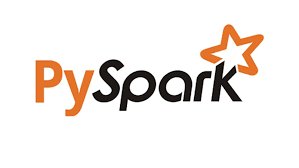PySpark – Overview
Apache Spark is written in Scala programming language. To support Python with Spark, Apache Spark Community released a tool, PySpark. Using PySpark, you can work with RDDs in Python programming language also. It is because of a library called Py4j that they are able to achieve this.
PySpark offers PySpark Shell which links the Python API to the spark core and initializes the Spark context. Majority of data scientists and analytics experts today use Python because of its rich library set. Integrating Python with Spark is a boon to them.
What is PySpark?
PySpark is a python API for spark released by Apache Spark community to support python with Spark. Using PySpark, one can easily integrate and work with RDD in python programming language too. There are numerous features that make PySpark such an amazing framework when it comes to working with huge datasets. Whether it is to perform computations on large data sets or to just analyze them, Data engineers are turning to this tool. Following are some of the said features
Key features of PySpark
- Real time computations: Because of the in-memory processing in PySpark framework, it shows low latency
- Polyglot: PySpark framework is compatible with various languages like Scala, Java, Python and R, which makes it one of the most preferable frameworks for processing huge datasets
- Caching and disk persistence: PySpark framework provides powerful caching and very good disk persistence
- Fast processing: PySpark framework is way faster than other traditional frameworks for big data processing
- Works well with RDD: Python programming language is dynamically typed which helps when working with RDD.
Why PySpark?
Need of PySpark
The more solutions to deal with big data, the better. But then, if we have to switch tools to perform different types of operations on big data then having a lot of tools to perform a lot of different tasks does not sound very appealing anymore, does it?
It just sounds like a lot of hassle one has to go through to deal with huge datasets. Then came some scalable and flexible tools to crack big data and gain benefits from it. One of those amazing tools that helps handling big data is Apache Spark. Now it’s no secret that Python is one of the most widely used programming language among data scientists, data analytics and many more IT experts. Be it because of its simple and interactive interface or because it’s easy to learn or because it’s a general-purpose language that is a secondary thing, what matters is that it is trusted by data scientist folks to perform data analysis, machine learning and many more tasks on big data using Python. So, it’s pretty obvious that combining Spark and Python would rock the world of big data, isn’t it?
| Criteria | Python with Spark | Scala with Spark |
|
Performance Speed
|
Python is comparatively slower than Scala when used with Spark, but programmers can do much more with python than Scala because of the easy interface that it provides | Spark is written in Scala, so it integrates well with Scala. Its faster than python |
|
Learning Curve
|
Python is known for its easy syntax and being a high-level language makes it easier to learn. Python is also highly productive even with it’s simple syntax | Scala has an arcane syntax which makes it hard to learn but once you get a hold of it you will see that it has its own benefits |
|
Data science Libraries
|
In Python API, you don’t have to worry about the visualisations or Data science libraries. You can easily port the core parts of R to Python as well | Scala lacks proper Data science libraries and tools, Scala does not have proper local tools and visualisations |
|
Readability of Code
|
Readability, maintenance and familiarity of code is better in Python API | In Scala API, it’s easy to make internal changes since Spark is written in Scala. |
|
Complexity
|
Python API has an easy, simple and comprehensive interface | Scala’s syntax and the fact that it produces verbose output is why it is considered complex language |
|
Machine learning libraries
|
Python language is preferred for implementing machine learning algorithms | Scala is preferred when you have to implement data engineer technologies rather than machine learning |








